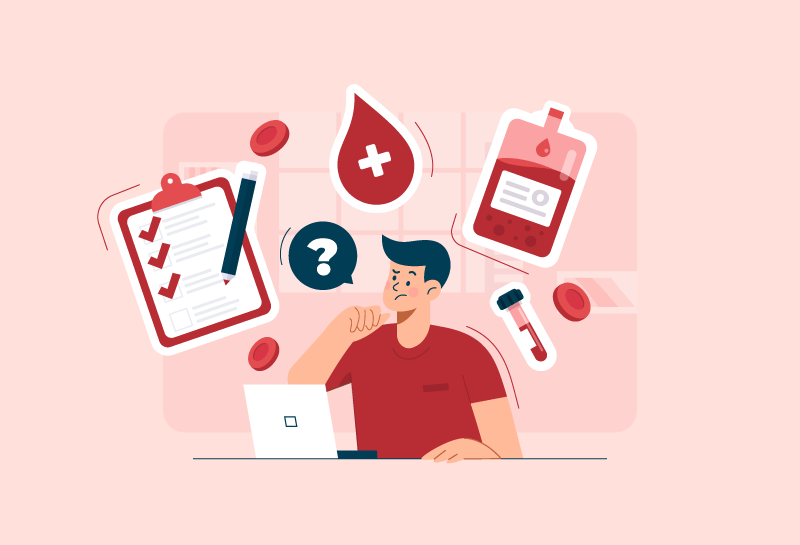What if the biggest breakthrough in healthcare wasn’t the latest medical treatment or advanced surgical procedures, but a simple shift in how we think about health? What if we stopped waiting for disease to strike before we took action? As the global health landscape continues to grapple with rising chronic diseases and escalating medical costs, one truth is becoming undeniably clear: prevention isn’t just a medical option anymore, it’s the key to shaping a sustainable, healthy future.
We’re living in an era of unprecedented medical breakthroughs and technological advancements. While medical treatments have progressed significantly over the years, it’s important to pause and ask ourselves: Are we focusing on the right priorities? Although we’ve made significant progress in treating illness, we’ve yet to master the art of prevention. As healthcare systems around the world face mounting pressure, the real game-changer may not be the next cure; it lies in a shift towards a prevention-first mindset, something we’ve long overlooked. Now, it’s time for a deeper conversation about how we can prioritise prevention to stop crises from ever arising.
A global health crisis: Rising costs and chronic diseases
Healthcare systems are under immense pressure across the globe. While nations like the United States and those in Europe face skyrocketing healthcare costs driven by ageing populations and lifestyle diseases, the Asia-Pacific (APAC) region is not immune. Countries like China, India and Australia are experiencing significant rises in non-communicable diseases (NCDs) such as heart disease, diabetes, and cancer. The World Health Organization (WHO) estimates that nearly 70% of all deaths in APAC countries are due to NCDs, based on 2019 data, highlighting the urgent need for a shift toward preventive healthcare. And if we continue on this path, these numbers will only rise.
Beyond the healthcare burden, the economic impact of these diseases is profound. In China alone, the cost of treating diabetes is predicted to surpass $40 billion annually by 2030, reflecting a massive financial challenge as the country faces a growing number of diabetes cases. In India, cardiovascular diseases have become the leading cause of death, responsible for 26.6% of all deaths as of 2017, according to the Indian Council of Medical Research (ICMR). The increasing burden of obesity, particularly in urban populations, further compounds the issue, contributing to the rise of heart disease and other NCDs. These figures aren’t just statistics, they’re a wake-up call. We need to explore, not just the costs of treatment, but the deep-rooted societal and economic costs of not adopting a prevention-first approach.
The question is: can we afford to wait?
The hidden costs of inaction: When society and individuals pay the price
While healthcare systems worldwide are struggling, it's crucial to ask: What is the true cost of neglecting prevention? It’s not just about immediate healthcare costs; it’s also about the long-term impact on individuals and society as a whole. Chronic diseases, which could have been prevented through lifestyle changes and early detection, bring cascading economic and social consequences. These include the loss of productivity, caregiving burdens, and a shrinking workforce. But perhaps the most personal toll is on individuals, who face increased health insurance premiums as a direct consequence of not addressing their health earlier.
Let’s break it down: When diseases are left unchecked, not only do healthcare systems bear the burden, but individuals also face financial strain. Health insurance premiums, which have been rising globally, are largely driven by the increasing prevalence of chronic diseases. This means that the more we allow chronic conditions to proliferate without prevention, the higher the cost of health coverage becomes, for both individuals and employers. The burden shifts from public policy to private individuals who are left with the option of either paying more in premiums or forgoing coverage altogether.
So, how does prevention benefit individuals, and why should it be a central part of their health strategy?
By focusing on preventive care, individuals can significantly reduce their risk of developing costly chronic diseases. A healthier lifestyle, regular screenings, and vaccinations can lead to fewer medical expenses, lower premiums, and a higher quality of life. It’s not only about preventing illness; it’s about protecting both your financial security and personal wellbeing. The cost of maintaining a healthy lifestyle is minimal compared to the long-term savings in medical expenses, health insurance premiums, and lost wages.
Shifting the mindset: Prevention as an investment, not a cost
We must redefine how we view healthcare investments. Historically, prevention has been treated as an optional expenditure, something we “might” invest in if resources allow. But in a world of rising healthcare costs and increasing premiums, it’s clear that prevention should be viewed as a long-term investment in the future of both individuals and healthcare systems.
What would it take for policymakers and healthcare providers to embrace this shift? How do we convince governments and organisations that investing in prevention is the only sustainable solution, not just a “nice-to-have” program?
Countries like Japan, South Korea, and Singapore have demonstrated the effectiveness of preventive health initiatives. Japan’s success with nationwide metabolic syndrome screenings has helped reduce chronic conditions and contributed to both a high life expectancy and relatively low healthcare costs. In South Korea, the implementation of universal health coverage and preventive health programs has resulted in a 43.6% decrease in age-standardised disability-adjusted life years (DALYs) related to NCDs from 1990 to 2019. Singapore’s preventive health measures, such as regular screenings and health promotion, have been central to the nation’s healthcare strategy and have contributed to a recent decrease in diabetes prevalence, from 9.5% in 2019-2020 to 8.5% in 2021-2022, demonstrating the potential effectiveness of its approach.
The question remains: How can we bring these successful models to other countries, especially in the APAC region, where the burden of NCDs is growing at an alarming rate?
Health tech and innovation: The future of prevention
Technology is revolutionising the way we approach healthcare and holds immense potential for preventing diseases before they even begin. The advent of wearables, telemedicine, and digital health platforms presents an opportunity to integrate prevention into daily life. These tools provide individuals with real-time data about their health, empowering them to make informed decisions that can lower their risk of chronic conditions.
However, the full economic impact of these technologies is still unfolding. By investing in digital health innovations, we not only improve individual health outcomes but also reduce the strain on the healthcare systems, which could ultimately lead to lower premiums for individuals. The question is: Will we embrace this shift toward digital health, and what roles will governments, private companies, and individuals play in shaping this new, prevention-focused future?
The economics of prevention: A smart investment for the future
We’ve already seen that prevention reduces long-term healthcare costs. But what about the return on investment for prevention programs? How can we quantify the broader economic benefits, including fewer missed workdays, a more productive workforce, and reduced disability claims?
Investing in preventive healthcare has demonstrated significant returns. For example, research published in the journal Hypertension on self-measured blood pressure (SMBP) monitoring programs, especially when combined with clinical support, shows a return on investment ranging from $7.50 to $19.34 for every $1 spent over a ten-year period. Similarly, a meta-analysis published in Health Affairs found that for every $1 invested in workplace wellness programs, medical costs can decrease by around $3.27, with an additional $2.73 saved through reduced absenteeism. These findings highlight the strong economic case for prioritising preventive health strategies.
For businesses, investing in employee wellness programs not only reduces absenteeism and healthcare costs but also increases employee satisfaction and productivity. When companies provide preventive health benefits, it pays off in the long-term with a more resilient and healthier workforce.
The question is: Will we wait, or will we act now?
As we face an increasingly complex global health landscape, the conversation around prevention must evolve. Prevention is no longer just an option; it’s an imperative. The question isn’t whether we should prioritise prevention, but how we can integrate it fully into healthcare systems, policies, and individual lifestyles.
It’s time to stop waiting for the next cure to emerge. The future of healthcare doesn’t lie in reactive treatments; it lies in proactive prevention. For individuals, prevention can mean reduced health insurance premiums, fewer healthcare expenses, and a better quality of life. For nations, it’s an economic strategy that ensures a healthier, more productive future.
The question is: Will we wait, or will we act now? The time to shift our focus toward prevention is now. The economic, societal, and personal benefits are clear, and the longer we delay, the higher the costs will be. Let’s not wait for disease to strike so let’s act before it’s too late.



 Copied
Copied














 5 mins read
5 mins read 





